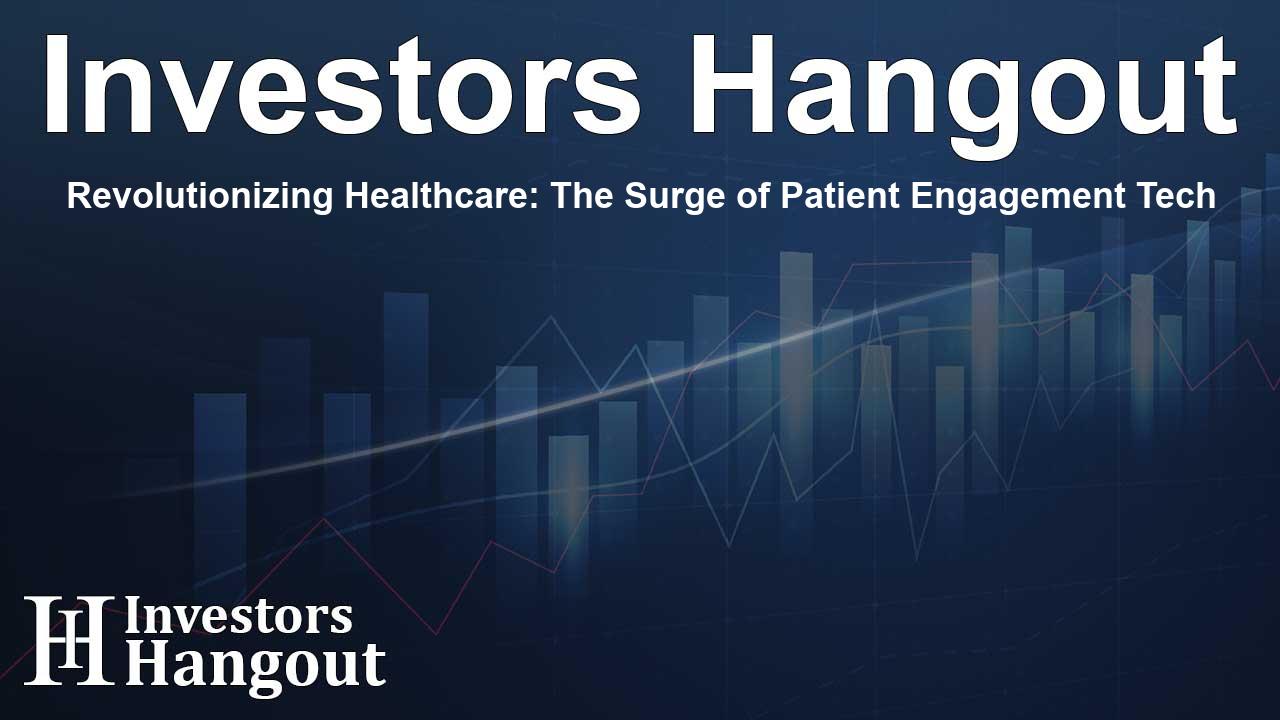Revolutionizing Healthcare: The Surge of Patient Engagement Tech

Introduction to the Patient Engagement Tech Market
The landscape of patient engagement technology is evolving rapidly as advancements in artificial intelligence (AI) and healthcare digitization shape the field. A recent report projects a remarkable growth of approximately USD 37.4 billion from 2024 to 2028. This growth is largely driven by the rising prevalence of chronic diseases and the increasing incorporation of technology in healthcare delivery.
Key Drivers of Market Growth
Impact of AI and Digitalization
One of the primary catalysts for this promising expansion is the transformation brought about by AI technologies across the healthcare sector. With a projected compound annual growth rate (CAGR) exceeding 20.56%, this market is positioned for significant development. The digitalization of healthcare fosters improved communication between patients and providers, enhances health outcomes, and streamlines overall operational efficiency.
Adoption of Patient Engagement Solutions
As Payers, Providers, and Individual users increasingly recognize the importance of enhanced healthcare consumerism, a notable surge in demand for patient engagement solutions is observed. These tools encompass a wide range of applications, including mobile health apps, telehealth capabilities, and health-monitoring wearables, all contributing to improved health management, especially for individuals suffering from chronic illnesses.
Challenges Facing the Market
Regulatory Hurdles
Despite the growth potential, challenges remain significant. The Health Insurance Portability and Accountability Act (HIPAA) presents stringent guidelines that healthcare entities must adhere to, ensuring patient data privacy. While these regulations are crucial for safeguarding information, they also limit the functionality of certain patient engagement tools. This paradox presents a barrier that the industry continues to navigate as innovators strive to balance compliance with enhanced patient interaction.
Technological Integration Issues
In addition, there are concerns about the integration of various patient engagement solutions within existing healthcare frameworks. The diversity of technologies employed across different healthcare settings may introduce complications in data sharing, accessibility, and user experience.
Market Segmentation
The patient engagement technology market is diverse, with segmentation occurring along various lines:
- Delivery Mode: Solutions are primarily available in on-premise formats or cloud-based systems, with cloud solutions seeing a dominant share due to their flexibility and cost-effectiveness.
- Target Audience: Engagement tools cater to multiple stakeholders, including providers, payers, and individual patients, facilitating tailored services to each segment’s specific needs.
- Geographical Distribution: The market is broadly spread across North America, Europe, Asia, and other regions, with North America leading in market share.
Competitive Landscape
The competitive environment within the patient engagement technology sector includes a variety of key players. Major companies such as agilon health Inc., ALLSCRIPTS HEALTHCARE SOLUTIONS INC., and Epic Systems Corp. are at the forefront, contributing innovative solutions that enhance patient interactions.
Emerging Trends
Current trends emphasize the utilization of AI in patient engagement strategies. This technology not only assists in tracking health data but also personalizes patient care routines, making them more effective. As these technologies advance, additional applications, such as virtual consultations and real-time health monitoring, will likely become mainstream.
Conclusion
The patient engagement technology market is on an upward trajectory, spurred by the demand for improved healthcare solutions amidst an increasingly digital landscape. As organizations work to overcome the challenges posed by regulations and integration, the focus remains on leveraging technology to enhance patient experiences and outcomes. With a compound annual growth rate forecasted at over 20%, the next few years will be crucial in shaping the future of patient engagement technology.
Frequently Asked Questions
What is the projected growth of the patient engagement technology market?
The global patient engagement technology market is estimated to grow by approximately USD 37.4 billion between 2024 and 2028.
What are the main factors driving market growth?
The primary factors driving growth include the increasing cases of chronic diseases and the rising incorporation of AI and digitization in healthcare.
What are the significant challenges faced by the market?
Significant challenges include stringent regulations such as HIPAA and issues related to technological integration within existing systems.
Who are the key players in the patient engagement technology market?
Key market players include agilon health Inc., ALLSCRIPTS HEALTHCARE SOLUTIONS INC., and Epic Systems Corp., among others.
How does AI influence patient engagement solutions?
AI enhances patient engagement solutions by enabling personalized care, facilitating real-time monitoring, and streamlining communication between patients and providers.
About Investors Hangout
Investors Hangout is a leading online stock forum for financial discussion and learning, offering a wide range of free tools and resources. It draws in traders of all levels, who exchange market knowledge, investigate trading tactics, and keep an eye on industry developments in real time. Featuring financial articles, stock message boards, quotes, charts, company profiles, and live news updates. Through cooperative learning and a wealth of informational resources, it helps users from novices creating their first portfolios to experts honing their techniques. Join Investors Hangout today: https://investorshangout.com/
Disclaimer: The content of this article is solely for general informational purposes only; it does not represent legal, financial, or investment advice. Investors Hangout does not offer financial advice; the author is not a licensed financial advisor. Consult a qualified advisor before making any financial or investment decisions based on this article. The author's interpretation of publicly available data shapes the opinions presented here; as a result, they should not be taken as advice to purchase, sell, or hold any securities mentioned or any other investments. The author does not guarantee the accuracy, completeness, or timeliness of any material, providing it "as is." Information and market conditions may change; past performance is not indicative of future outcomes. If any of the material offered here is inaccurate, please contact us for corrections.